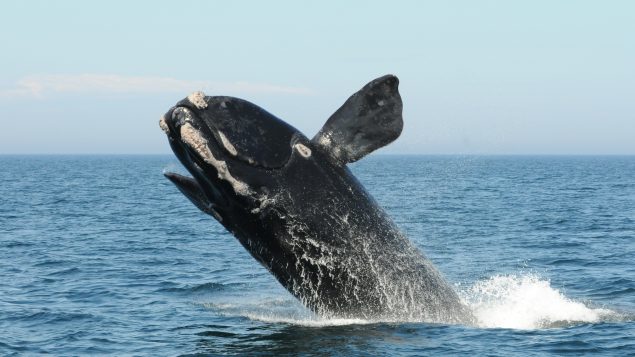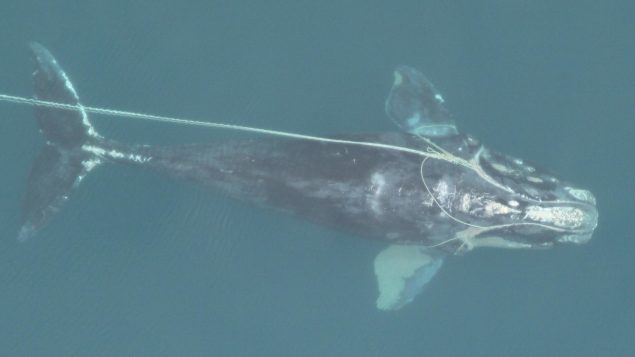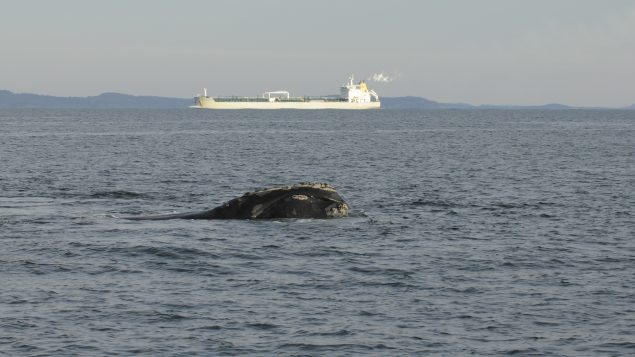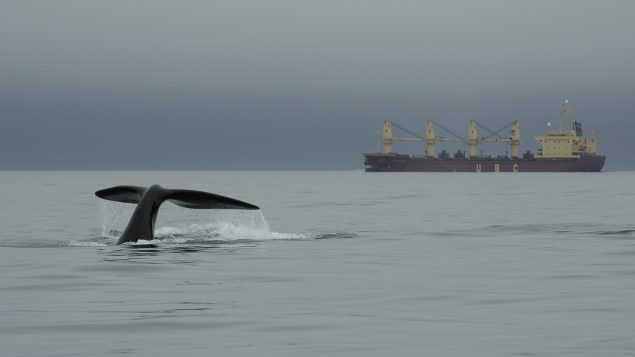International conservation groups are calling on Canada and the United States to beef up measures designed to protect endangered North Atlantic right whales from ship strikes and entanglements in fishing gear.
The call comes as the International Union for Conservation of Nature (IUCN) declared Thursday that North Atlantic right whales living off the Eastern coasts of the U.S. and Canada are moving closer to extinction.
In an update to its “Red List of Threatened Species” on Thursday, the IUCN moved North Atlantic right whales from “endangered” to “critically endangered” status, the international body’s most serious category of risk.
The IUCN assessment estimates that there are about 400 North Atlantic right whales left with fewer than 250 mature animals. They are the only large whale species listed as critically endangered.
Only ten calves were observed in U.S. waters in 2020. That is well below the 30 calves that would be expected from a population of that size.
One of those calves has already died as a result of a ship strike, U.S. officials believe.
“Entanglements and ship strikes are pushing these amazing animals to the brink of extinction,” said Kristen Monsell, legal director of the U.S.-based Center for Biological Diversity’s oceans program. “The United States and Canada must do more to protect whales from speeding ships and slow, painful deaths in fishing gear.”
Kim Elmslie, campaign director of conservation group Oceana Canada, said given the recent calve death and the fact that more right whales have died than were born in recent years, they were not surprised to see this upgrade in their status to critically endangered.
“Canada has an obligation to protect these whales that are an important part of the ocean ecosystem,” Elmslie said.
Vikki N. Spruill, president and CEO of the New England Aquarium, said the world is running out of time to save these majestic creatures.
“Whaling nearly killed right whales in the early 1900s,” Spruill said in a statement. “Science tells us that we need to take immediate and urgent steps to prevent that from happening now.”

A North Atlantic righ whale (Catalog #4143) breaches in the Bay of Fundy on Aug. 21, 2012. (Marianna Hagbloom/Anderson Cabot Center, New England Aquarium. Collected under Canadian SARA permit)
Research scientists at the New England Aquarium’s Anderson Cabot Center for Ocean Life are recommending ship speeds in all U.S. and Canadian waters be reduced to ten knots or less for vessels of all sizes.
Studies have found that slowing ship speeds to 10 knots or less in areas where these whales may be encountered can reduce the lethality of a collision by 86 per cent, according to Oceana.
Also conservation groups worry that mariners simply ignore voluntary speed limits suggested by authorities to reduce the risk of ship strikes, while mandatory speed limits are more strictly observed by ship captains.
Analysis of satellite data conducted by Oceana in May showed that 72 per cent of ships transiting through the Cabot Strait – a key passage for North Atlantic right whales as they migrate into the Gulf of St. Lawrence in search of food – were not complying with the voluntary slowdown of 10 knots set by Ottawa.
“The government can and should immediately make this slowdown mandatory,” Elmslie said.

An emaciated, entangled North Atlantic right whale swimming with fishing trap rope around both flippers, through its mouth, and dragging behind it. The whale died one month later from emaciation and ultimately shark-inflicted wounds. (Florida Fish and Wildlife Commission, NOAA Permit #594-1759)
In addition, researchers at the New England Aquarium say the risks to North Atlantic right whales from entanglements in fishing gear must be lowered by reducing vertical lines in the water and modifying gear to prevent entanglements.
Entanglements with fishing gear result in the whales drowning, prevent them from feeding, causing them to drag thousands of pounds of gear for thousands of miles, and produce unnecessary and inhumane pain and stress, according to more than 40 years of research by the aquarium.
“North Atlantic right whales are dying needlessly at the hands of humans,” the aquarium said in a written statement.
“It is imperative that the United States and Canada work together to prevent North Atlantic right whales from becoming the first large whale species to go extinct. For every whale we keep from a preventable human-caused death, we preserve a lineage of North Atlantic right whales for future generations.”
- Transport Canada fines ship for exceeding whale safety speed limit
- Conservation groups call for additional measures to protect endangered right whales
Amy Butcher, a spokesperson for Transport Minister Marc Garneau, said the federal government takes the protection and recovery of the North Atlantic right whale very seriously.
“For the fourth straight year, Transport Canada has implemented a seasonal mandatory speed restriction of 10 knots that covers much of the Gulf of St. Lawrence,” Butcher said.
A mandatory 10-knot speed restriction is also implemented in the dynamic shipping lanes when a North Atlantic right whale is detected in the area, she added.
“This year we are also testing a speed limit of 10 knots in parts of Cabot Strait in the spring and fall, when right whales are transiting through the area in larger numbers,” Butcher said. “These speed restrictions cover a large portion of the Canadian waters in which the majority of right whales have been detected in recent years.”

An oil tanker passes behind a right whale in the Bay of Fundy. (Allison Henry/Anderson Cabot Center, New England Aquarium. Collected under Canadian SARA permit)
This year the federal government has also introduced an area of restricted navigation that will increase protection of the expected right whale aggregation once it stabilises in the Gulf of St. Lawrence, Butcher said.
Vessels will be required to avoid this restricted area or travel at no more than 8 knots to go through it, she added.
Jennifer Kuss, a spokesperson for the Department of Fisheries and Oceans Canada, said the federal government has introduced a new season-long closure protocol in the Gulf of St. Lawrence.
Unlike the previous pre-set (static) season-long closure area, season-long closures will now be applied to areas where whales are detected more than once in 15 days, Kuss said. Impacted areas will remain closed until Nov. 15, 2020.
Canada has also expanded the temporary closure area to include the Bay of Fundy and the North Atlantic right whale critical habitat area in the Grand Manan Basin, Kuss said.
DFO officials will rely on underwater microphones (hydrophones) to confirm the presence of whales in the temporary closure areas, in addition to visual sightings from aircraft and vessels, she said.
In addition, the federal government has imposed new gear marking requirements for all non-tended fixed gear fisheries, including lobster and crab, in Atlantic Canada and Quebec.
“This will allow us to distinguish between Canadian and U.S. entanglements and will help us to improve our fisheries management measures,” Kuss said.
Officials with Fisheries and Oceans Canada will be working throughout the year with industry, fishery by fishery, to identify gear solutions for preventing injury to right whales, she said.
“We continue to adapt these measures year after year, taking into consideration past confirmed right whale detection, the latest science advice, navigational safety, and economic impacts,” Kuss said.







For reasons beyond our control, and for an undetermined period of time, our comment section is now closed. However, our social networks remain open to your contributions.